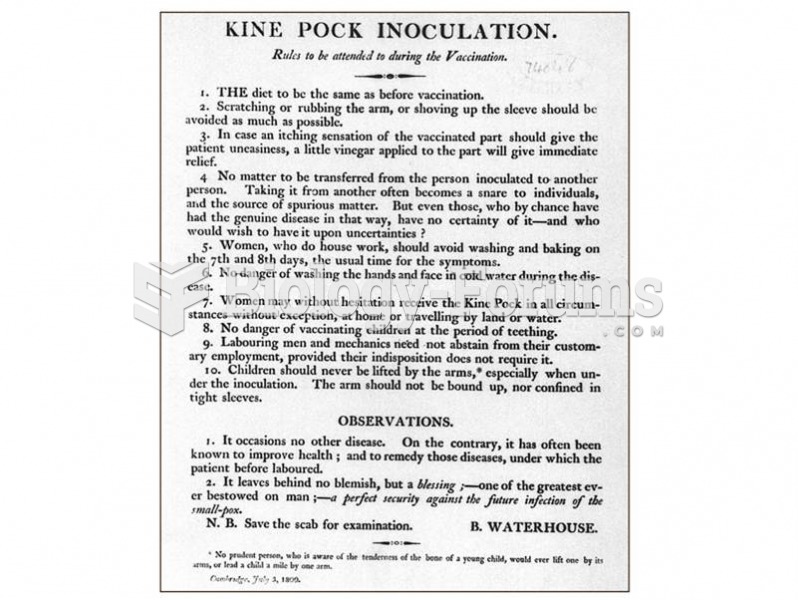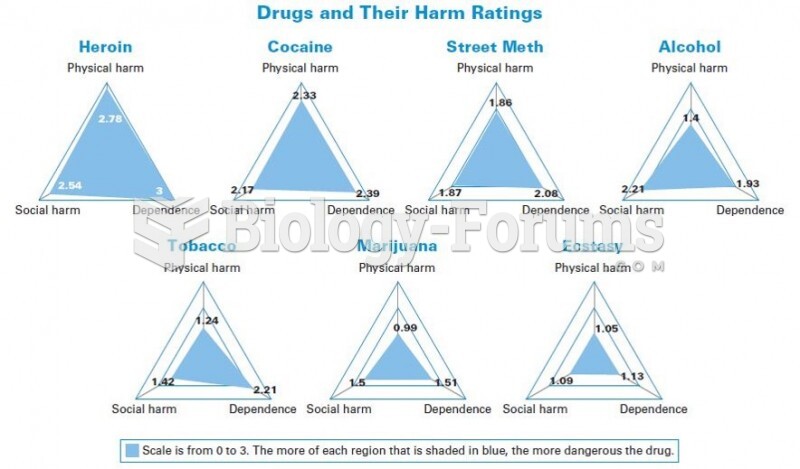|
|
|
There are more nerve cells in one human brain than there are stars in the Milky Way.
Eat fiber! A diet high in fiber can help lower cholesterol levels by as much as 10%.
Medication errors are more common among seriously ill patients than with those with minor conditions.
All patients with hyperparathyroidism will develop osteoporosis. The parathyroid glands maintain blood calcium within the normal range. All patients with this disease will continue to lose calcium from their bones every day, and there is no way to prevent the development of osteoporosis as a result.
Acute bronchitis is an inflammation of the breathing tubes (bronchi), which causes increased mucus production and other changes. It is usually caused by bacteria or viruses, can be serious in people who have pulmonary or cardiac diseases, and can lead to pneumonia.







